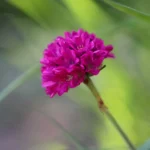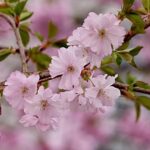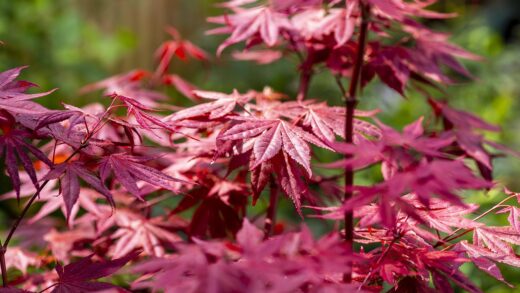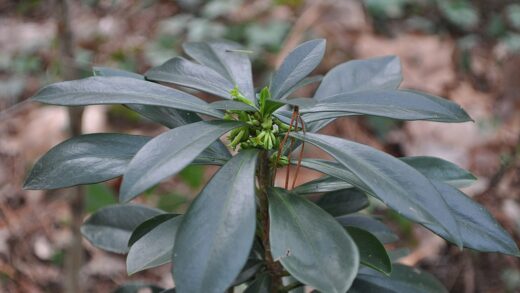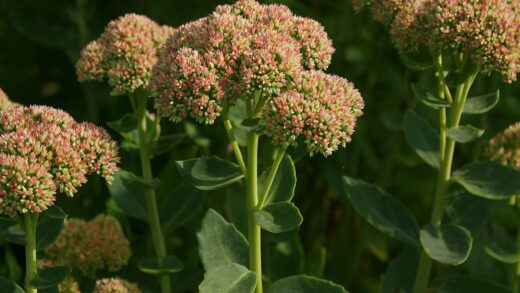Anemone hepatica is a remarkably low-maintenance perennial that requires minimal pruning or cutting back to thrive. Its natural growth habit is to form a neat, compact clump, and it does not have the unruly or invasive tendencies that would necessitate regular trimming to keep it in check. The primary reasons for any cutting would be for cosmetic tidiness and basic garden hygiene rather than for the health or vigor of the plant itself. Unlike many garden perennials that benefit from deadheading to encourage reblooming or cutting back to stimulate new growth, Anemone hepatica has a very defined, single period of bloom in the early spring, and its growth cycle does not respond to pruning in the same way. Therefore, any approach to pruning should be gentle, conservative, and undertaken with a specific purpose in mind.
The most common pruning task associated with Anemone hepatica is the removal of old, overwintered leaves on evergreen or semi-evergreen varieties. These leaves often become tattered, discolored, or damaged by winter weather. While they are not necessarily harming the plant, their removal can greatly improve its appearance as the new season’s growth emerges. This tidying process allows the delicate new flowers and fresh, glossy foliage to be displayed to their best advantage, creating a much cleaner and more attractive plant in the spring garden.
This removal of old foliage is a task of timing and delicacy. It is crucial to wait until the new flower buds and leaves are beginning to emerge from the crown of the plant before cutting away the old leaves. The overwintered foliage provides a degree of protection to the dormant crown during the winter months. Removing it too early in the late winter or very early spring could expose the emerging buds to late frosts or cold damage. Patience is key; it is better to be slightly late with this task than too early.
When the time is right, the old leaves should be carefully cut off at their base using a small, sharp pair of scissors or fine-tipped pruners. It is important to be precise and to avoid damaging the new, tender shoots that are emerging from the center of the plant. Pulling or tearing the old leaves is not recommended, as this can dislodge the plant’s shallow root system or damage the crown. This simple, careful grooming is the main form of “pruning” that Anemone hepatica will ever need.
Deadheading and flower removal
The concept of deadheading, which is the removal of spent flowers, serves different purposes for different plants. For many perennials, deadheading prevents the plant from setting seed, redirecting its energy into producing more flowers or stronger vegetative growth. For Anemone hepatica, however, this practice is generally unnecessary and often not recommended. The plant has a single, finite blooming period in the spring, and removing the faded flowers will not induce a second flush of blooms.
More articles on this topic
After the petals drop, the remaining parts of the flower will develop into seed heads. For many gardeners and enthusiasts, allowing the plant to produce seed is desirable. It allows for the possibility of natural propagation within the garden, where seedlings may appear in surprising and delightful places. Furthermore, for those interested in plant breeding or propagating from seed, collecting these ripe seeds is the primary goal. Therefore, unless there is a specific reason to prevent self-sowing, leaving the flowers to form seed is standard practice.
There are a few situations where a gardener might choose to remove the spent flower stems. If the garden has a very formal and manicured aesthetic, the appearance of the seed heads might be considered untidy. In this case, the flower stems can be snipped off at their base after the petals have faded. Another reason might be to prevent a specific hybrid from cross-pollinating with other nearby varieties if the gardener wishes to maintain the genetic purity of different cultivars.
If deadheading is performed, it should be done with care, using small, sharp scissors to cut the flower stalk close to the base of the plant. One must be careful not to accidentally cut or damage the surrounding leaves, which are vital for the plant’s energy production throughout the rest of the year. In most informal or woodland garden settings, however, the seed heads are not unattractive and are best left on the plant to complete their natural cycle.
Managing diseased or damaged foliage
Throughout the growing season, it is good practice to monitor Anemone hepatica for any signs of disease or physical damage to the leaves. Although generally healthy, the plant can occasionally be affected by fungal leaf spots or other minor issues. Prompt removal of any diseased foliage is an important aspect of garden hygiene and can prevent the potential spread of pathogens to the rest of the plant or to neighboring plants.
More articles on this topic
When a leaf shows clear signs of a fungal infection, such as distinct spots, blotches, or a powdery mildew coating, it should be cut off at its base with a clean, sharp tool. It is important to dispose of this removed foliage in the trash rather than adding it to the compost pile, as composting may not generate enough heat to kill the fungal spores, potentially reintroducing the problem to the garden later. After cutting diseased material, it is wise to sterilize the pruning tool with rubbing alcohol or a bleach solution before using it on other plants.
Leaves can also become damaged through physical means, such as from hail, accidental disturbance, or pest activity like chewing from slugs or snails. If a leaf is severely damaged, torn, or mostly eaten, it can be removed for aesthetic reasons. A cleanly cut stem is generally more attractive than a ragged, damaged leaf. However, if the damage is minor, it is often best to leave the leaf on the plant, as even a partially damaged leaf can still contribute to photosynthesis and the overall energy economy of the plant.
This type of pruning is reactive rather than preventative and should only be done on an as-needed basis. There is no need to regularly trim or shape the foliage of Anemone hepatica. The plant’s natural clump-forming habit is one of its most appealing characteristics. The goal of this type of maintenance is simply to keep the plant looking its best and to practice good sanitation to minimize the risk of disease.
Pruning for propagation
While division is not technically a form of pruning, it is the only time that the plant is significantly cut or separated. Division is the primary method for propagating a specific cultivar to create genetically identical new plants. This process is best done in the spring, shortly after the plant has finished flowering. At this time, the entire clump is carefully lifted from the ground and the root mass is exposed.
Using a sharp, sterilized knife or the points of two garden forks placed back-to-back, the clump is carefully separated into smaller sections. Each section must have at least one, and preferably several, healthy growing points (crowns) and a substantial portion of the root system. This process involves cutting through the dense, fibrous root mass to create viable divisions. The goal is to make clean cuts and to minimize tearing or crushing of the plant tissue.
After the clump has been divided, any damaged or broken roots on the new divisions can be trimmed cleanly with scissors. This can help to stimulate new root growth once the division is replanted. The foliage on the divisions is typically left intact, as it is needed to photosynthesize and provide energy for the plant to re-establish itself. However, if a division has a large amount of foliage but a relatively small root system, removing one or two of the older, outer leaves can help to reduce water loss through transpiration, lessening the stress on the new plant.
Once prepared, the divisions should be replanted immediately into a suitable location and watered in thoroughly. This surgical process of division is the most invasive “pruning” that Anemone hepatica will typically undergo, and it is done not for the maintenance of the parent plant, but for the creation of new ones.
Avoiding common pruning mistakes
One of the most significant mistakes a gardener can make is to cut back the foliage of Anemone hepatica after flowering in the late spring or summer, as one might do with other perennials like hardy geraniums. The leaves that develop after flowering are essential; they are the plant’s engine for the rest of the growing season. These leaves work throughout the summer and autumn to create and store the energy that will be used to produce the following year’s flowers. Removing this foliage prematurely would be catastrophic, severely weakening the plant and almost certainly eliminating the next season’s bloom.
Another error is being too hasty in the spring to “clean up” the plant. As mentioned, removing the old, overwintered foliage too early can expose the tender emerging flower buds to late frosts. It is always best to wait until the new growth is clearly visible before attempting to trim away the old leaves. This ensures the plant’s most precious assets—its flowers—are not put at unnecessary risk.
Using blunt or dirty tools is a further mistake. Blunt tools can crush or tear the delicate leaf stems, creating ragged wounds that are more susceptible to infection. Dirty tools can transfer pathogens from one plant to another, spreading disease throughout the garden. A small, sharp, and clean pair of scissors is the best tool for the minimal pruning tasks required by Anemone hepatica.
Finally, a conceptual mistake is to over-manage the plant. Anemone hepatica is a plant that thrives on a certain degree of benign neglect once it is established in the right location. It does not require or desire constant fussing, trimming, or shaping. The beauty of this plant lies in its simple, natural form. Understanding and respecting this nature is the key to successful cultivation and appreciating its understated elegance in the garden.









